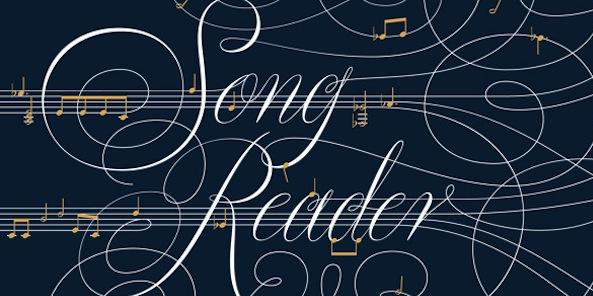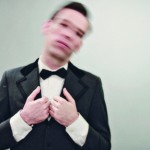Recently I had the privilege of taking part in an evening of orchestral music presented at the Good Shepherd Center, a beautiful former chapel space in Seattle. This, however, was not your typical orchestral concert. The concert-goers had not gathered to hear classical music; rather, they had come to hear the Seattle premiere of Beck Hansen’s newest release, Song Reader
Song Reader is unique in that it’s not a recording — it’s sheet music, and Beck encourages “readers” to perform these pieces in whatever formation they see fit, and to upload videos of their performances to the Song Reader website. The only way to hear these tunes is to go to a live performance, watch user-uploaded versions, or play them yourself. To be honest, I was fairly skeptical upon first reading about it — I thought it might be slightly lazy. I imagined Mr. Hansen whipping out some tunes, having some folks transcribe them into written form and others illustrate them with clever drawings, and getting it onto store shelves in time for Christmas. I also wondered whether people would actually do it. My skepticism was somewhat allayed by the fact that Beck has put a lot of heart and effort into his previous releases, and that his main collaborator on the project, McSweeney’s, also has very high quality control for their work and never seem to do anything half-assed. I wound up being very excited by Beck’s ability to somehow make sheet music cool again for the general public.
As soon as I had Song Reader in my hands, it all made sense. One of my favorite things about it is how beautiful the illustrations are, and the way they riff on the pictures in old sheet music, but in a way that’s smart, never mocking the medium, but simply having fun with it. As with all McSweeney’s stuff, it is a beautiful thing to behold, something that most music releases these days lack. (Thank goodness for the vinyl revival.) Even if you never tinkled a single note, you could find pleasure in thumbing through the book. Beck assembled an amazing cast of artists to illustrate pictures for each song, including Marcel Dzama and Jessica Hische. Each picture is stylistically different but fits the theme of the song well and manages to remain cohesive with the rest of the collection. But the final big hurdle to convince this fellow was the actual songs.
Funnily enough, around the same time Song Reader came out, I had issued my own album called Scores, which is instrumental versions of the songs on my album Composed, along with downloadable scores for each song. Scores/Composed is an orchestral endeavor and I find orchestral sheet music typically to be very expensive and fairly hard to come by, which was the driving force for me to release my own record this way. I released it with the hopes that it would simply give people at home something to play along to, perhaps a cellist who hasn’t played in a while and wanted to just play some music, or maybe even an ensemble here or there might like to give a song a go, but that’s a very narrow market! The major difference between my release and Beck’s is that mine was written with the orchestra in mind, not something solo performers would be able to play alone. It is a much more typical way to release sheet music these days. Beck, on the other hand, approached sheet music the old-fashioned way, allowing performers a lot of freedom to perform these works in limitless variations.
In the heyday of sheet music, there would sometimes be fragments of other songs at the end of a page, or on the back, a few trial bars to entice you to buy more sheet music. Such fragments are in Song Reader too, but instead, they’re little snippets of weirder or more playful tunes, and I have already witnessed these fragments blossoming into some pretty wild pieces of music.
Around the time that I was asked to write about Song Reader for the Talkhouse, I was also asked by the Seattle Rock Orchestra to be part of a show that was going to perform a bunch of songs from Song Reader in an orchestral format. I was asked to arrange “Do We? We Do” for the orchestra. I dived in, and what I found was that this tune, like the others, still sounded like it could be a Beck song. It was also clear that this music was written very specifically and rather successfully for a nearly forgotten format of sheet music writing. These were not songs that seemed like the piano part and guitar part from a song from Sea Change mashed together to be playable and somewhat recognizable with the words written above or something, these were written to sound great as pieces played by one or two people sitting in a living room together making music. This is music created for a more minimal format — and because Beck himself has not performed these songs, people have a lot of freedom to interpret them. They can play them slow or fast and let their own imaginations guide them: there is no wrong or right. It was not that long ago that this was the only way to hear music in the evenings: sit down, pull out some popular, classic or obscure sheet music and do your best to please your own ears. The fact that these tunes were written in this more minimal form also makes them very easy to blow up into a much larger arrangement. It can be much harder to minimize an already elaborately arranged tune. (At least it is for me!)
When I approached arranging “Do We? We Do,” my first inclination was to get abstract. I was thinking about ways I could use the framework and re-imagine it to create something totally different. But as I began working on it, I found that the tune, although simple, had some really nice dissonances and cool harmonies. The song has a kind of a dark polka (“oompah”) vibe written for piano and I decided to take the notes that were written and faithfully split up each finger into a different instrument. Sometimes the “oompah” was plucked strings and I would use the woodwinds to layer my own ideas upon, and sometimes it was the woodwinds taking on the “oompah” and the strings could execute my ideas on top of them. I added some of my own harmonies and dissonances to melodies that were already there, as well as filling in spaces as I saw fit. I then went a step further and added harp, percussion and other instruments that would give my arrangement the balance I wanted. I also invited my friend Jason Webley, who is really good at singing dark polkas, to be the vocalist. The tune proved to have a lovely amount of guiding material, but also space to do with it what you desired.
Most of the folks at the performance had not had the opportunity to hear any of these songs in any form before, and the anticipation and excitement were palpable. Without his knowing, Beck hosted an elaborate and whimsical evening of music, bringing together an orchestra and a large audience. The songs whizzed by quickly and brought on laughter, sing-alongs and a solid dose of introspection.
Since that show there have been at least two other fairly large-scale versions of these tunes performed in Seattle alone, with countless others elsewhere, I am sure. The website has also amassed hundreds of user-uploaded videos, ranging from solo musicians with an acoustic guitar, fancy folks with fancy lights, insanely creative and elaborate music videos (how did they make those so fast?!), to full-on orchestral versions. I cannot think of an artist other than Beck who could pull off something like this so well. The fact that his songwriting and career have explored so many sounds and genres, and that he can excite such a large fan base to actually get off their butts and in front of a piano makes this a very clever and inspired project indeed. It has certainly sparked the imaginations and creativity of many people, which is to me a very beautiful thing.



